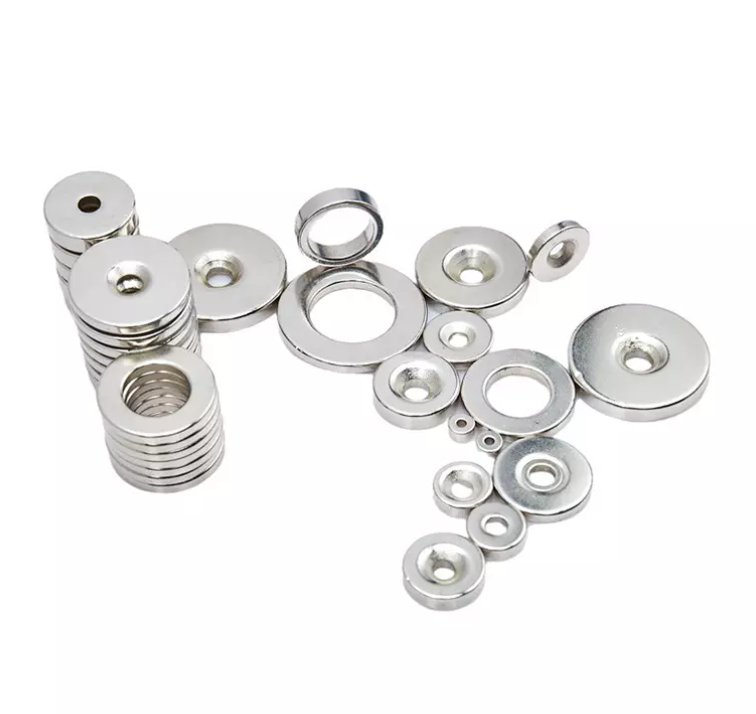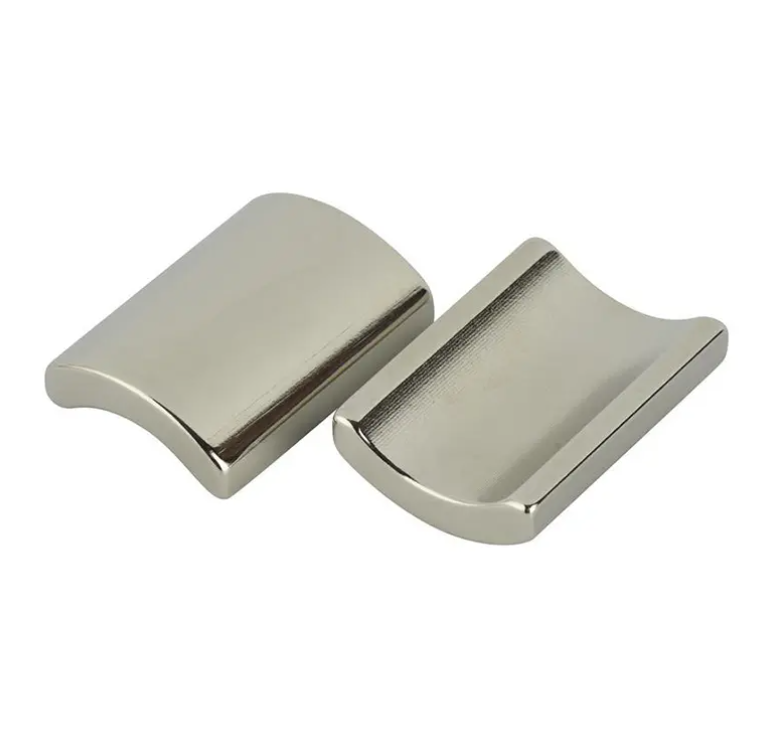Neodymium magnets are powerful and widely used in many industries. But when comparing the N35 and N52 grades, which one is stronger? Understanding the differences between these magnets is crucial for selecting the right one for your application. In this post, we'll explore the strengths, costs, and ideal uses of N35 and N52 magnets to help you make an informed decision.
Understanding N35 and N52 Magnets
What Are Neodymium Magnets?
Neodymium magnets are one of the strongest types of permanent magnets. They are made from an alloy of neodymium, iron, and boron (NdFeB). These magnets are widely used in industries such as electronics, automotive, and renewable energy because of their powerful magnetic properties.
N35 and N52 are both grades of neodymium magnets, each offering different magnetic strengths for various applications.
What Does N35 Mean?
N35 refers to a grade of neodymium magnet that has a maximum energy product of 35 MGOe (Mega Gauss Oersted). This measure indicates the magnet's magnetic strength. N35 magnets are commonly used in general-purpose applications where moderate strength is sufficient.
They are often found in household items, educational kits, and light-duty motors. The key characteristics of N35 magnets include good strength at a lower cost compared to higher-grade magnets.
What Does N52 Mean?
N52 is a high-performance neodymium magnet with a maximum energy product of 52 MGOe. This higher energy product means that N52 magnets are much stronger than N35 magnets. They are ideal for demanding applications requiring high magnetic strength, such as electric motors, wind turbines, and high-end speakers.
The key characteristics of N52 magnets include superior strength, smaller size, and greater magnetic pull. However, they are more expensive and require more precise production methods.

Key Differences Between N35 and N52 Magnets
Magnetic Energy Product (MGOe)
The Magnetic Energy Product (MGOe) measures a magnet's ability to store magnetic energy. It's calculated by multiplying the magnetic flux density (Br) by the magnetic coercivity (Hc). Higher MGOe values indicate stronger magnetic power.
When comparing N35 and N52 magnets, the key difference lies in their MGOe values:
● N35 has an MGOe around 35, while N52 reaches up to 52 MGOe.
● This higher MGOe in N52 means it can store more magnetic energy in the same volume, resulting in stronger magnetic force. In practical terms, N52 magnets offer higher performance and are better suited for applications requiring strong, compact magnets.
Magnetic Field Strength: Which is Stronger, N35 or N52?
Magnetic field strength refers to the overall power of a magnet to attract objects. It's measured in Gauss or Tesla. The greater the field strength, the stronger the magnet's pull force.
For N35 and N52 magnets:
● N35 typically has a magnetic field strength of 11,700 Gauss.
● N52 can reach 14,500 Gauss.
This difference in field strength affects how the magnet pulls on objects. N52 magnets produce a much stronger magnetic field, which means they can attract and hold heavier objects than N35 magnets. Whether you need magnets for industrial applications or high-performance motors, the stronger the magnetic field, the better the magnet's effectiveness in your project.
Coercivity and Resistance to Demagnetization
Coercivity measures a magnet's ability to resist being demagnetized by external forces like temperature or mechanical stress. The higher the coercivity, the more stable the magnet is under tough conditions.
● N35 has a coercivity of about 868 ka/m, while N52 has a coercivity around 827 ka/m.
● This means that N35 is slightly better at resisting demagnetization, especially in environments with high temperatures.
N35's higher coercivity makes it more durable in situations where a magnet needs to resist external forces, such as in high-heat environments or under physical stress.
Temperature Resistance: Which Magnet Performs Better?
Temperature resistance is critical in many applications, especially when magnets are exposed to heat from machines, motors, or environmental factors.
● N35 magnets can withstand up to 80°C, which makes them ideal for higher-temperature applications.
● N52 magnets, on the other hand, have a lower temperature tolerance, typically around 60°C before their strength starts to degrade.
In applications like motors or industrial machines, where heat is a factor, N35 magnets are the better choice due to their superior heat resistance. If you need a magnet that can maintain its performance in extreme heat, N35 is the more reliable option.
Durability and Longevity of N35 vs. N52
Durability and longevity are important when choosing the right magnet. Both N35 and N52 magnets are known for their strength, but they behave differently under stress.
● N35 magnets are more resistant to mechanical stress and heat, making them last longer in conditions that involve friction, pressure, or fluctuating temperatures.
● N52 magnets, though stronger in terms of magnetic power, can be more brittle and susceptible to damage under high stress or extreme temperatures.
This difference means N35 magnets can handle tougher environments where strength needs to be maintained over time, while N52 magnets are better suited for situations that require raw power, but not as much exposure to harsh conditions.
Strength Comparison: How Much Stronger is N52 Compared to N35?
Lifting Power and Pull Force
When comparing the lifting power and pull force between N35 and N52 magnets, the difference is significant. N52 magnets are known to be more than 50% stronger than N35 in terms of lifting capacity.
● N35 magnets typically offer a pull force of around 1-2 kg for smaller sizes.
● N52 magnets can provide a pull force ranging from 1.5-3 kg for similar-sized magnets.
This increased lifting power in N52 makes it ideal for industrial lifting, high-performance motors, and applications where strong magnetic force is necessary. For example, wind turbines and electric generators often use N52 magnets to handle the high magnetic force required in these systems.
Size, Shape, and Versatility: N35 vs. N52
One of the key considerations when choosing between N35 and N52 magnets is the size and shape needed for the application. N52 magnets provide greater strength in smaller sizes compared to N35. This can be an advantage when space is limited.
● N52 magnets generate the same magnetic strength as larger N35 magnets but are more compact.
● For applications where a smaller size is crucial but strong magnetic force is still required, N52 is the better choice.
However, N35 magnets still hold great value in applications where high strength isn't required. They are often used in DIY projects, fridge magnets, and small motors, offering enough strength for these smaller, less demanding tasks.
Cost Comparison: Is N52 Worth the Extra Price?
When it comes to cost, N52 magnets tend to be more expensive than N35 magnets. This price difference is due to several factors:
● N52 magnets require higher-quality raw materials and more precise manufacturing processes.
● Their higher magnetic force also demands more complex production, driving up the price.
Despite the higher cost, N52 magnets are often worth the investment when strong magnetic force is required for high-performance applications like motors, generators, or magnetic levitation systems. However, for applications with moderate strength needs, N35 magnets offer a more cost-effective solution while still providing ample power for most standard tasks.
Applications: When to Use N35 vs. N52 Magnets
Common Applications of N35 Magnets
N35 magnets are a versatile choice for many everyday tasks. Their moderate strength makes them ideal for applications where high magnetic power isn't necessary.
● Household uses: Fridge magnets, small door locks, and holding devices
● Educational kits: Perfect for classroom experiments and projects
● Crafts: Used in DIY projects like magnetic art, toys, and models
The moderate strength of N35 magnets suits most home and hobby projects, where the need for intense magnetic force is not critical. They also provide cost-effective solutions in these areas.
Common Applications of N52 Magnets
N52 magnets are specifically designed for situations where superior magnetic power is required. Their higher energy makes them the go-to choice for high-performance applications.
● High-performance motors: Used in advanced motors and generators where strong and compact magnetic force is needed.
● Industrial equipment: For lifting devices, magnetic separators, and robotic arms that require strong, reliable magnetic strength.
● MRI machines: Essential in medical applications, where N52 magnets are used to generate powerful and stable magnetic fields for imaging.
N52 is often chosen in industries that demand high magnetic performance, such as renewable energy, medical imaging, and aerospace, due to its compact size and powerful magnetic force.

How to Choose the Right Magnet for Your Needs
Choosing the right magnet involves considering several factors:
● Strength requirements: Do you need a strong magnetic field, or is moderate strength sufficient?
● Cost considerations: N52 magnets are more expensive due to their superior strength and production requirements.
● Size and space: If space is limited, N52's higher strength in a compact size can be beneficial.
● Durability: How much stress or heat will the magnet endure? N35 may be more durable in high-temperature or mechanical stress environments.
Depending on the task or environment, either N35 or N52 magnets may be more suitable. N35 works well for lighter applications, while N52 excels in more demanding, high-performance environments. Understanding the pros and cons of each can help you choose the right magnet for your project.
Conclusion
N52 magnets are stronger, making them the best choice for high-tech, industrial, and research applications. Their superior strength in compact sizes is essential for tasks like high-performance motors and medical equipment. On the other hand, N35 magnets are more economical and suitable for everyday household uses or lower-demand projects. Ultimately, choosing the right magnet depends on your strength needs, budget, and specific application requirements.
FAQ
Q: What Is the Main Difference Between N35 and N52 Magnets?
A: The main difference between N35 and N52 magnets lies in their strength. N52 magnets have a higher magnetic energy product (52 MGOe), making them stronger than N35 (35 MGOe). N52 is ideal for high-performance applications, while N35 is more economical for general uses.
Q: Can I Replace an N52 Magnet with a Larger N35 Magnet?
A: Size alone cannot replace the superior strength of N52. While a larger N35 magnet might have a bigger size, N52's higher energy product and magnetic field strength provide much more power, especially in compact applications.
Q: Are N35 Magnets Better for High-Temperature Environments?
A: Yes, N35 magnets generally perform better in high-temperature environments, with a tolerance of up to 80°C. In contrast, N52 magnets have a lower temperature tolerance, typically around 60°C, making them less ideal for high-heat applications.



















